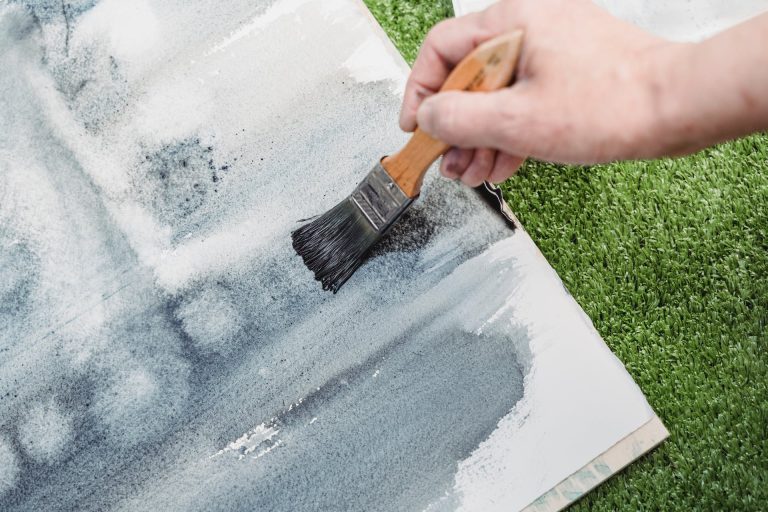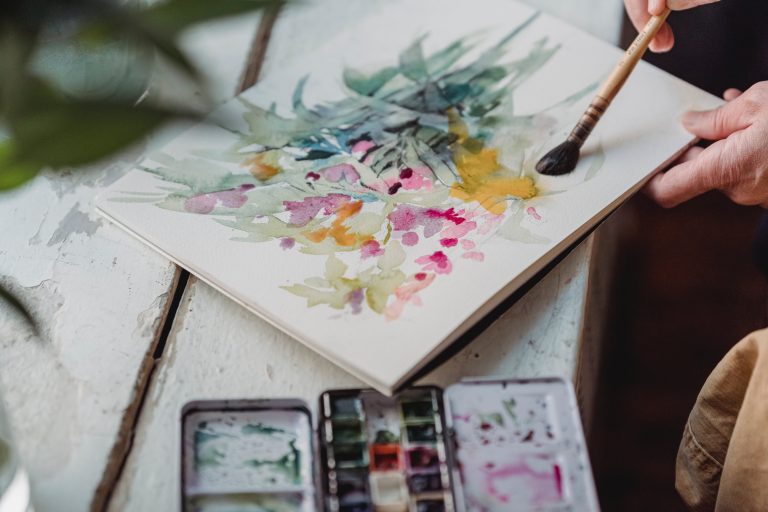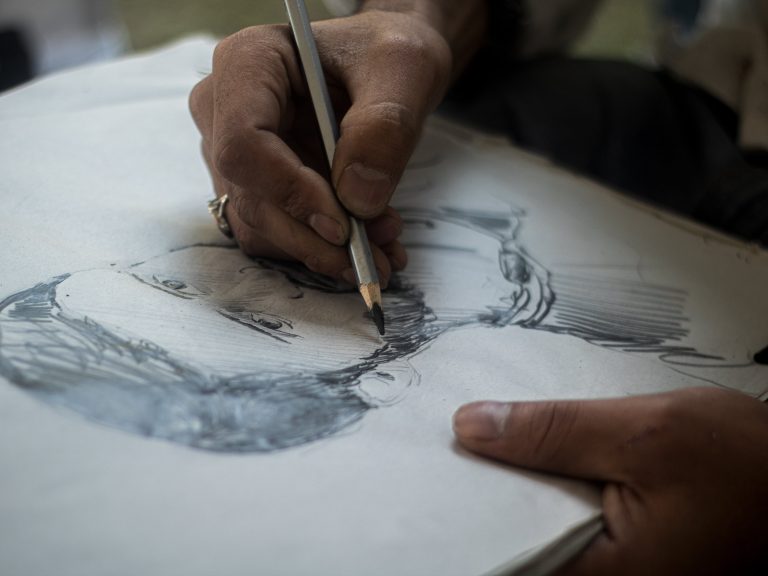What are Acrylic Paints?
“Acrylic paints are basically pigments suspended in a water-soluble acrylic polymer media that becomes water-resistant when dry”.
The advantages of working with acrylics versus other media types is that they are fast-drying, easy to clean up, have low odor, and are heavily pigmented, meaning the colors can be very bold and vibrant. Unlike oils, you can continue to paint over the dried areas and not see any mistakes, hence it’s a very appealing medium for beginners.
Acrylic paints typically dry a darker hue than the pigment they exhibit when wet, they do not spread (like watercolors or gouache), they dry very quickly (which has its perks but can make blending tricky), they’re water-soluble when wet, and they are water-resistant when dry which means that once dry, they cannot be altered.
What are MEdiums I Can paint on?
The most typical surface for painting using acrylics, in general, is a stretched canvas, but the wonderful thing about acrylic is that you can use it on many different and exciting surfaces. With acrylic paints, you can paint on almost anything you can imagine, from paper to wood, stones, tiles, fabric, and walls. You can let your imagination run wild, and the things you can create are endless!.
What type of paint should I start with?
Student grade acrylic paints are a better and relatively affordable alternative to professional or artist-grade paints. These paints are made by the same manufacturers as professional or artist-grade acrylic paints. As a result, these paints have a much higher level of pigmentation, and they typically have the same names for colors as professional paints. With student grade acrylic paints, you can mix and blend your colors with much greater ease, and your final piece will be vibrant and beautiful.
Student grade paints are great for beginners because it can be less intimidating to use less expensive paint. It can sometimes feel like you are wasting your expensive paints on experimentation in the early stages of learning to paint, so starting with more affordable paints is a great option. Not only this, but many student grade acrylic paints share the names of colors with the more professional grade paints, which means you can familiarise yourself with the colors you enjoy using.
When you then feel ready to upgrade to professional-grade paints you can easily buy the same colors, which can save you some money and time of trying to find an exact equivalent.
What do You need to Begin Painting with Acrylics?
Many people starting to experiment with acrylic paint will rush out and buy everything they could possibly need. Not necessary. You do not need a whole art store’s worth of equipment when you first begin to paint with acrylics. There are a few tools like brushes, canvases, and a palette for mixing, which are essential for success with acrylics.
The Best Brushes for Painting with Acrylic Paint
Brushes can be overwhelming. There are so many different options that it can be tricky to know what you need. We suggest that you start with a few good and versatile brushes and then begin to build your collection once you get more used to what each brush can do. Synthetic brushes are the way to go for good quality.
For starters, you can look into the following brushes:
- Acrylic liner brush
- Acrylic wash brush
- Acrylic flat brush
- Acrylic angled brush
- Acrylic fan brush
- Acrylic round brush
- A palette knife






